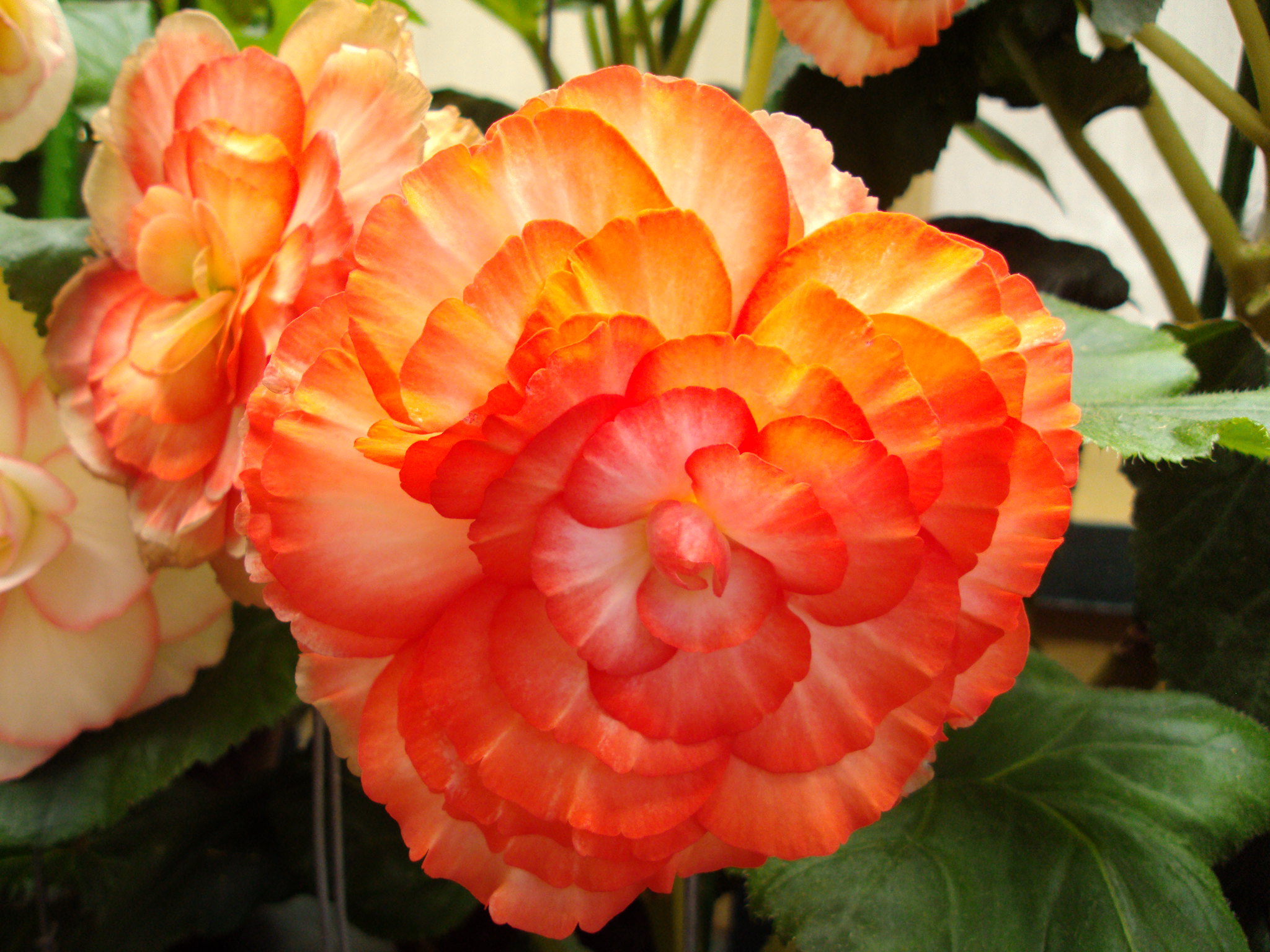In spring, garden centers stock a tempting variety of brightly colored tuberous begonias that are hard to resist.
Gardeners have a tremendous choice of flower color in shades of orange, pink, yellow, white and bi-colored. “There are so many choices for tuberous begonias,” said Nicole Sanchez, Oregon State University Extension Service horticulturist. “They come in so many colors and there are a lot of new salmon/orange varieties on the market now. In my experience, the yellow ones are always a little less vigorous than other colors.”
As much as there is to recommend tuberous begonias, the catch is, they don’t winter over. When summer ends, it’s time to save and store tuberous begonias so their beauty can be enjoyed again in future seasons. (Worth noting, tuberous begonias aren’t the same as low-growing wax begonias, which are often called annual bedding begonias. Those don’t respond to winter protection.)
Sanchez recommends the following five steps to save your potted tuberous begonia tubers:
- Remove plant from pot before hard frosts occur. Cut back most of the top of the plant, leaving the ball of roots and soil intact.
- Place in a dry, cool storage area (a basement or garage) and allow the tubers to cure for several weeks.
- After curing, shake off the soil and remove the remaining stalks and roots. Any stalks or roots left has the potential to rot and spread the rot to the tuber. Put the tubers on screen trays or pack them in dry peat, sawdust, sand, or other insulating material.
- Store tubers in a dry, dark, cool (above freezing) area.
- In the spring, start begonia plants by placing the tubers on damp potting soil in a warm environment. When roots and tops have started, plant them in pots in rich, well-drained potting soil. Bring outdoors when all danger of frost is past and place in a shady spot.
When planting them in the spring, tuberous begonias should be grown in bright shade. Too much sun will burn them. Too little will make them leggy.
They should be watered only when the soil dries out completely.
“We can easily love them to death,” Sanchez said. “The biggest problem with tuberous begonias is operator error in the form of overwatering. Lots of water is already stored in the tubers and stems so be careful to check moisture in the soil at least an inch in, not just on the top. But there’s a fine line between letting them dry out well, and ‘Oops! It dried out too much.’ This is where I most often fail with begonias.”
Tuberous begonias don’t like potting soils that contain peat or sphagnum moss that hold lots of water, she added. All of that being said, if they are outside in hanging baskets, they will still need to be watered every day during hot weather.
Begonias are heavy feeders and will bloom larger and longer if they get regular fertilizer, Sanchez said. She recommends slow-release fertilizers for begonias, which are easier to apply and make it harder to over fertilize. Over-fed plants often get leggy and have weak stems.
Tuberous begonias contain both male and female flowers. The male flowers are the showier blooms. The female flowers are smaller and have fewer petals. Sanchez recommends removing female flowers, so all the plant’s energy goes into producing male flowers.
About OSU Extension: The Oregon State University Extension Service shares research-based knowledge with people and communities in Oregon’s 36 counties and the Confederated Tribes of Warm Springs. OSU Extension addresses issues that matter to urban and rural Oregonians. OSU Extension’s partnerships and programs contribute to a healthy, prosperous and sustainable future for Oregon.

